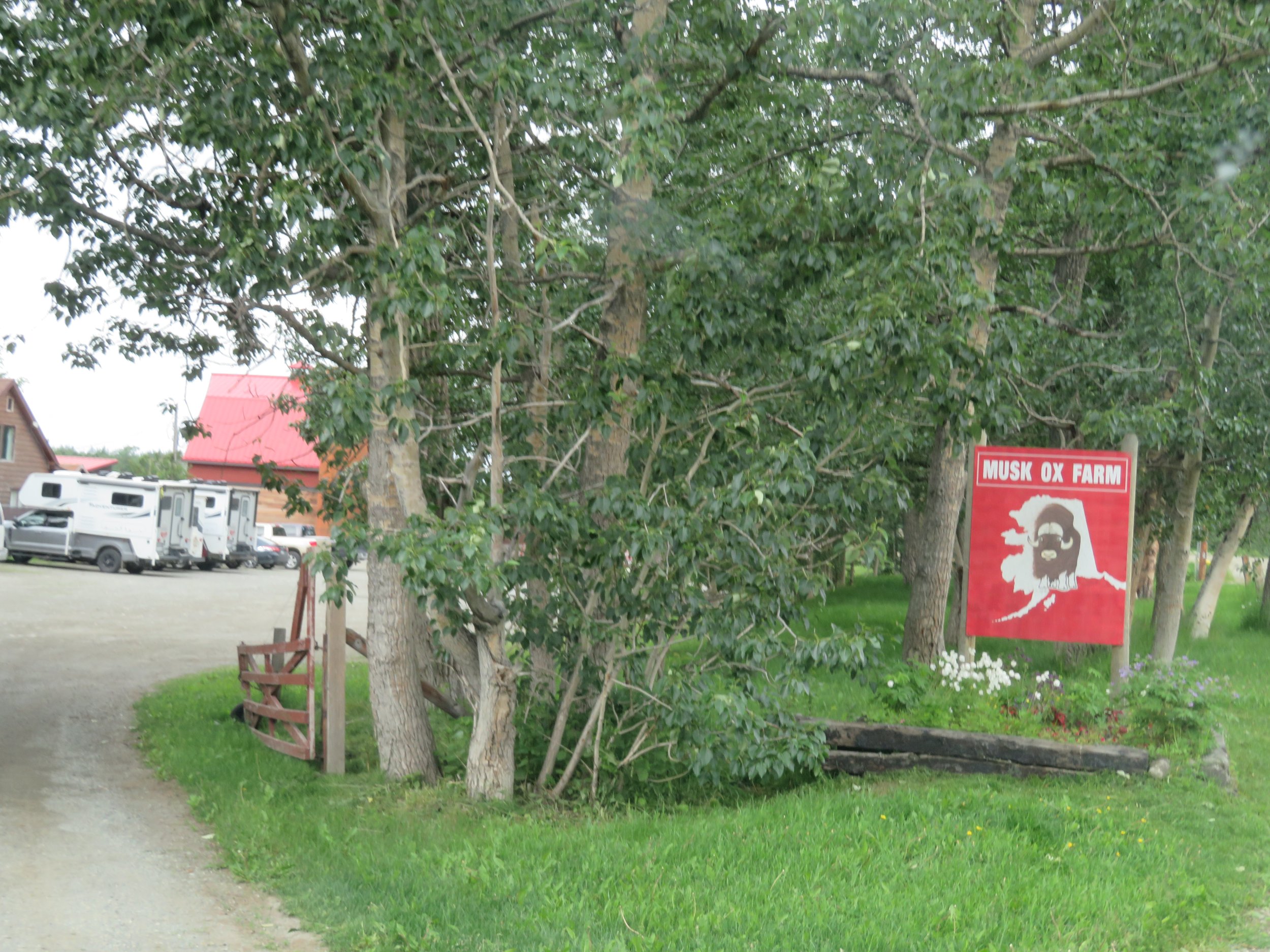A Meet-Up with Muskoxen
/After leaving Valdez and regaining the Glenn Highway, we headed west towards Anchorage. As the day waned, we considered stopping at a couple of the RV parks along the way, but they had the distinct disadvantages of being unappealing and very expensive. The Wrangell Mountains provided excellent views and we finally just stopped at a rest area (MM118) about 1/4 mile up a hill and off the highway. We had the whole place to ourselves for the night.
We’ve had the odd feeling that we’re in a foreign country. It’s hard to put your finger on it. The language is the same; the currency is the same; the people are friendly and helpful. It’s just ‘different’ than being in the ‘lower 48’. The stores are fewer and farther between and many are sparsely stocked and very, very expensive. Many of the buildings, exterior and interior, are dated. Repairs seem to be haphazard, gimcrack… low budget, almost third-worldish. We understand why and we’re not being critical, just observant. It’s a back-to-basics sort of feel. On the other hand, there’s no smog, there’s plenty of wide open space, the wildlife is incredible, and being here is wonderful.
It poured throughout the night and the next morning was cold and raw with fog so thick, we couldn’t see any of the vistas that had so impressed us the night before. Back on the highway, the fog dissipated as we progressed. The road was lined in purple cranesbill (aka northern geranium), white daisies and thousands if not millions of dandelion puffs ready to fly away.
The views of Matanuska Glacier weren’t great. From our perspective and distance, it looked like a dirty snowbank. I’m sure up close on a clear day with the sun glistening on the blue ice, it would be magnificent.
We’ve been so fortunate to see so much wildlife on this trip, but the chances of meeting or even seeing a musk ox in the wild are pretty minimal nowadays. Even in all of our zoo visits, I don’t think we’ve seen one, so when I saw an ad for the Musk Ox Farm in Palmer, Alaska, I lobbied heavily for a visit. Actually, it was pretty much a given that we’d stop. David is easy to convince.
Research on Wikipedia revealed that today's muskoxen ancestors probably came across the Bering Land Bridge to North America between 90,000-200,000 years ago and inhabited the Arctic areas of Canada, Greenland and Alaska. Due to overhunting, the Alaskan population was decimated in the late 19th and early 20th century. The current world population of muskoxen is estimated at between 80,000 and 125,000, with the largest concentration of an estimated 47,000 living on Banks Island, the largest island of an archipelago in the Inuvik region of the Northwest Territories.
Related more closely to sheep and goat than to oxen, the Musk Ox Farm has been successfully raising musk ox since the mid-1950s and now has 76 musk ox in residence. From their website, the farm “is dedicated to the gentle husbandry of the musk ox, an Ice Age mammal that once roamed the earth alongside saber-tooth tigers and woolly mammoths. In the Inupiaq language, “Oomingmak,” means “The Bearded One.” This once-endangered animal produces an annual harvest of qiviut (kiv'-ee-yoot), the finest wool in the world”… and the second rarest (only vicuña wool is rarer).
Though it was very cool to visit this unique farm (it’s the only musk ox farm in the world), the musk ox are, to be quite honest, pretty boring critters. They appear slow and ponderous because they are. I’m sure if we had time to get to know them better, we’d see they all have lovely and distinctive personalities, but in our 45 minute tour no personal relationships were developed.
We followed our guide on a proscribed route outside the fenced pasture enclosures. She provided a running commentary on musk ox and the farm and greeted each animal that came close. They are all ear-tagged with their names/IDs clearly marked as required by Alaska state law. Muskoxen chew their cuds like cows and have that same vacuous look in their eyes. Some were a bit curious and came closer to the fence, but most opted to ignore us and just chewed away.
We checked out the gift shop which included every musk ox item you could imagine and some you couldn’t… books, stuffed toys, calendars, notecards, clothing, etc. The processed rare qiviut yarn and knitted goods were way more expensive than we were interested in paying though touching the yarn was a wonderful sensory experience… soft, silky, heavenly. At $150 for 10 grams, the qiviut is laboriously hand-harvested from the undercoat of the musk ox and sent to Peru for processing, hence the expense. Qiviu does, however, have some pretty interesting characteristics: it’s warmer than wool, but lighter in weight, it’s water repellent, hypoallergenic and doesn’t itch or scratch your skin.
Though I didn’t purchase anything in the shop, I did appreciate the farm’s unique muskox weathervane.
Somewhat to David’s consternation, (okay, it’s really annoying him, but it’s one of those songs that I can’t get out of mind), I’ve been singing and humming ‘Muskox Love’, my own adaptation of the old Captain & Tenille song, since we left the farm.
And then we were heading west again and yes, we did reach Anchorage. A tale for the next blog… join us.











